After our visit to Londonderry, we drove up to the Inishowen Peninsula, north of Londonderry and in the Republic of Ireland. The weather was sunny until we got further into the Peninsula, and then we had clouds and a few drops of rain. Inishowen is the most northern part of Ireland and it has a lot of history and some amazing views. Today's plan was mainly to serve as a road trip and to stop off at a few points along the way, including Mamore Gap, Malin Head, Glenvin Waterfall, and Grianan Aileach.
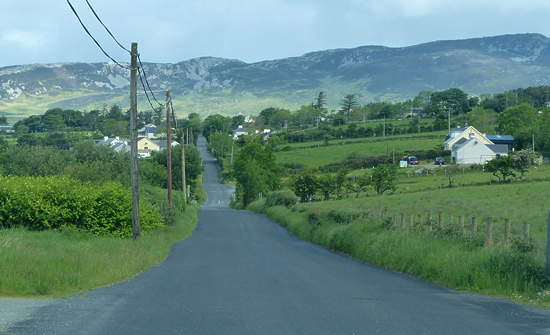
Driving north on the southern part of Inishowen, near Buncrana
We stopped at the tourist information point in Buncrana first, and I realised that there's actually a bit more to do on the Peninsula than what I read in any of the guide books before arriving. There's a fort (Fort Dunree) and a famine centre with reconstructed houses of the period that seems to be interesting, but we did not visit these. I would be interested in visiting these if I ever do find myself in this part of the world again.
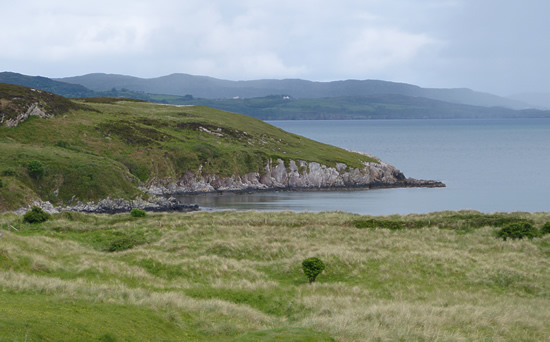
Coast driving north near Buncrana
The scenery along our drive was beautiful, and we caught glimpses of the sea as it opened into the Atlantic ocean. It was only a pity that the sun was not shining on the peninsula as it was in Derry when we left.

Sheep on a small road
We passed the fort mentioned earlier and followed the navigation toward Mamore Gap, toward Clonmany. These were some narrow dirt roads, and we had the roads to ourselves, at least in places. The roads also contained small flocks of sheep in places!
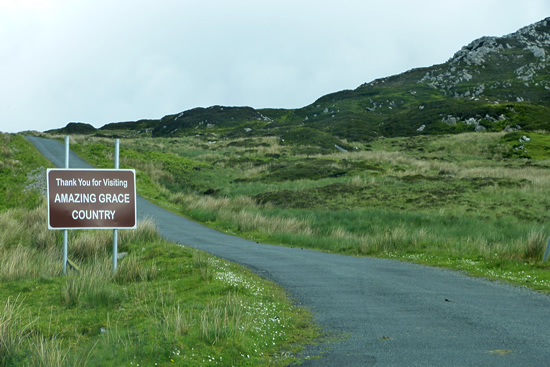
Amazing Grace Country
Finally, we got closer to the mountains and the Mamore Gap road. A sign along the road read "Thank you for visiting Amazing Grace country." This land is famous for the popular song "Amazing Grace", which is often sung in churches. Elvis Presley, Aretha Franklin and even Susan Boyle have sang the popular song.
The song was written by John Newton, who was a foul-mouthed sailor who worked on the ships for a slave-trading company. Newton ridiculed religion. On a trip back from Africa, a storm off the coast of Donegal nearly claimed the lives of everyone on board the ship, and the captain blamed Newton for the storm. The crew had to repair the ship and stay on Inishowen, and the storm incident and near loss of life caused Newton to change his ways.
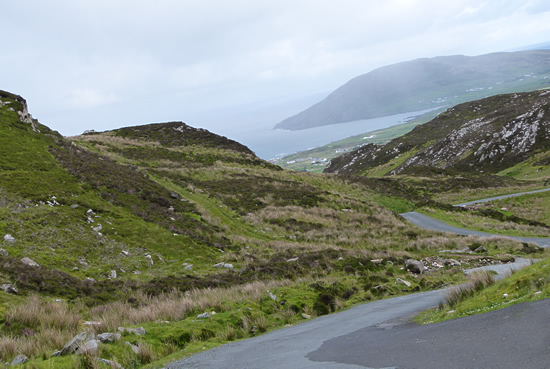
Mamore Gap
We drove further along and finally found our way to the top of the mountain with beautiful views of the sea in front of us. Visibility was not perfect, but we could still see and enjoy the views.
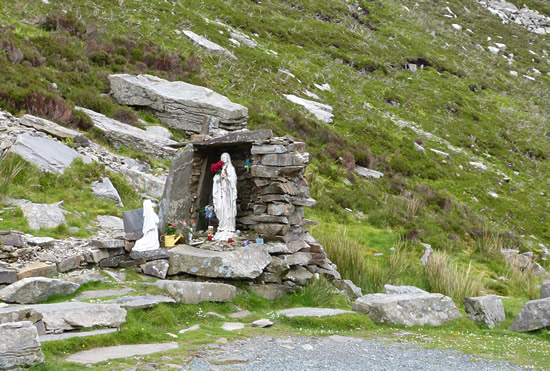
Shrine and St. Eigne's Well
At the top of the mountain are a couple of little ancient shrines and a religious well, known as St. Eigne's Well. These still function as pilgrimage sites today, and the well is visited in August.
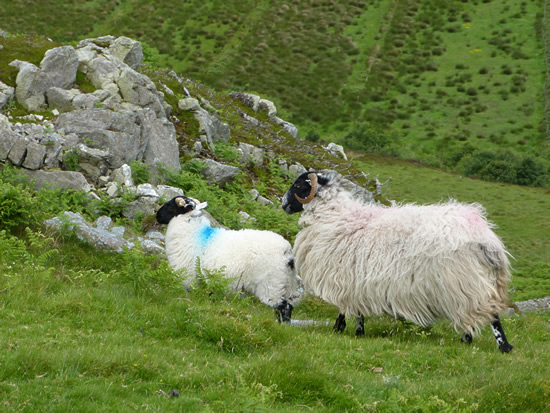
Sheep at Mamore Gap
Of course, sheep were on the mountains at Mamore Gap. I watched this mother sheep with her older lamb. They did not want to hang around us. We admired the views for a few moments and got some photgraphs.
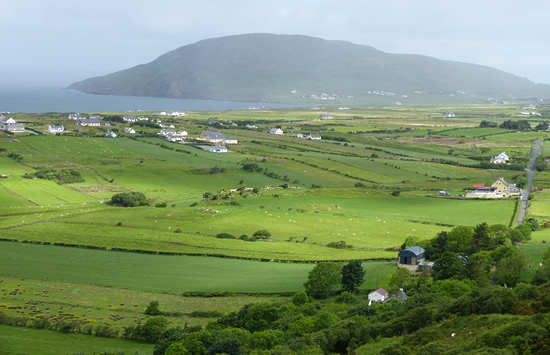
Views from Mamore Gap
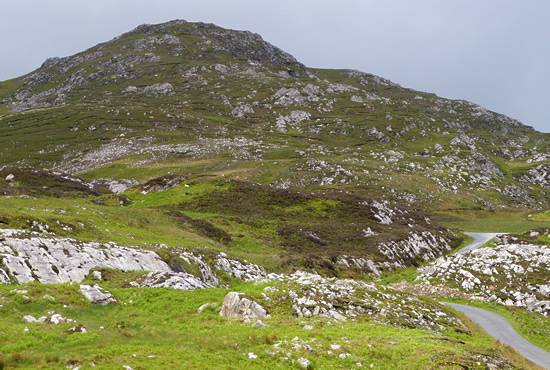
View of the mountain
After our visit to Mamore Gap, we drove down the mountain to heard toward Clonmany in order to visit Glenvin Waterfall, which is located on the outskirts of the village at Glen House hotel and tearooms.
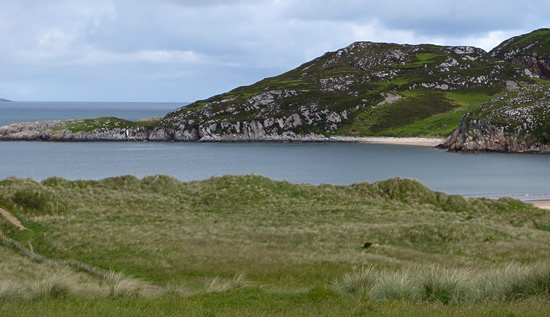
Sea views
Glenvin Waterfall is a fifteen-minute walk away on a well-marked and maintained trail through forest land. Sheep also have use of this land, and there are picnic benches near the beginning of the trail. When we arrived, the rain was coming down really hard. We quickly got our umbrellas out of the back of the car and decided to make the best of it. Had it been nicer weather, a picnic here would have been nice. Luckily, the rain ceased toward the end of the trail, and the sun came out a little. The trail followed a small stream and crossed it with bridges at some points.

Trail to Glenvin Waterfall
At the end of the trail, we saw the beautiful waterfall and took several photographs of it. We then had to make the 15-minute walk back, and I got some photographs of the trail and plants as the rain had stopped by this time.
We stopped at the small shop at the guest house when we returned to the car. The lady told us about the weekend's wash-out strawberry festival that she had the previous day. I wished I had asked for some strawberries and scones and clotted cream to take away!
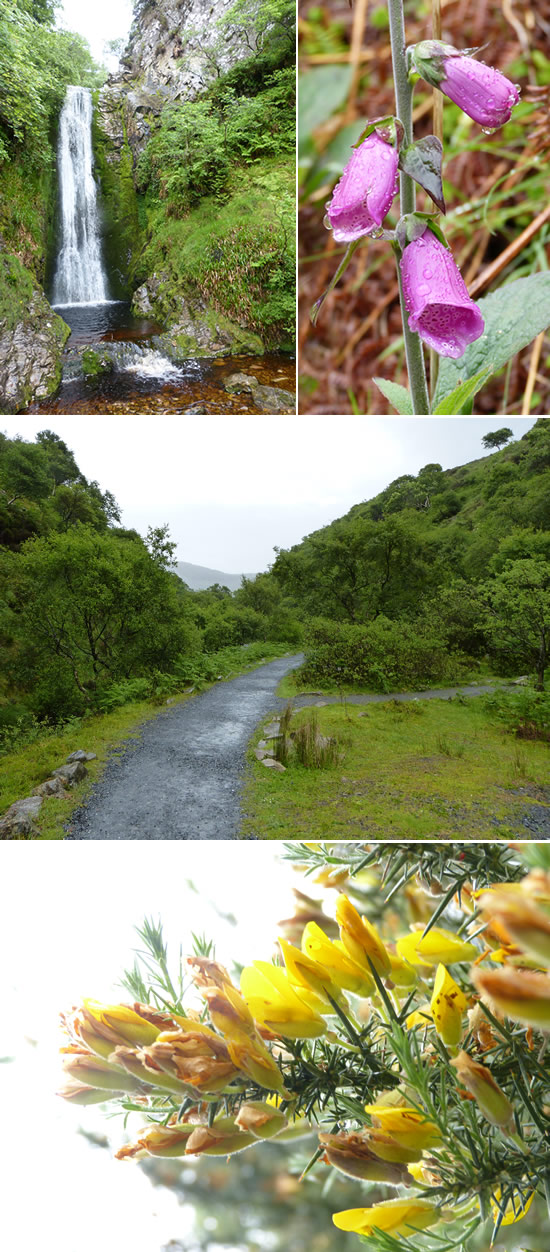
Trail from Glenvin Waterfall
After the waterfall, we drove up the road to Carndonagh to see Carndonagh Cross. This location was one of the main centres of the early church in Donegal and is meant to have been founded by St. Patrick. This St. Patrick's cross has a drawing of Christ on its east side. The two pillars have carved David the Warior and David the Harpist. The crosses may have been constructed in the 7th century.
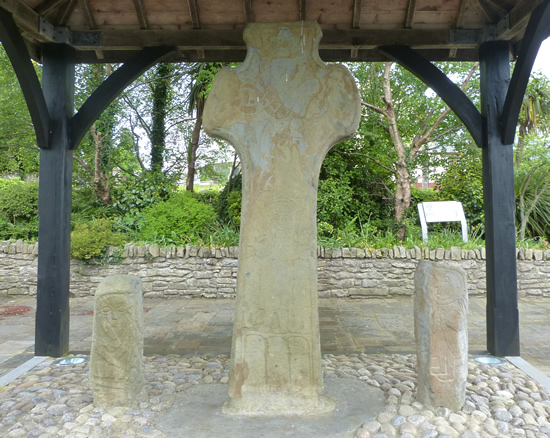
Carndonagh Cross
After the quick stop at the cross, we drove up the coast to Malin Head. Malin Head is used in daily shipping forecasts. In 1805, the British built watch towers here to guard against invasions from France in the Napoloeonic Wars. Later on, thest towers were used to communicate with ships offshore and Marconi Wireless Company set up a station in the tower. The concrete bunkers here date from World War II.
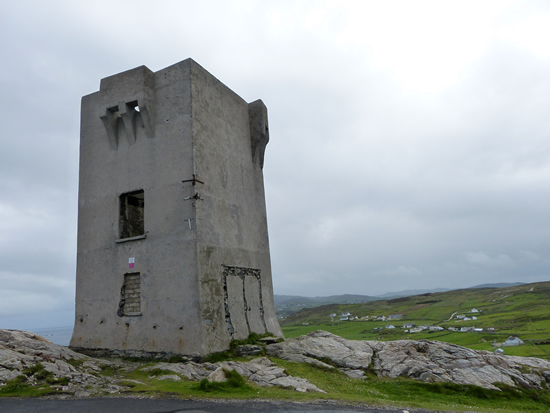
Bunkers at Malin Head
Sharks and different types of birds can be seen here, but it was extremely windy at Malin Head, and we did not see any bird or sea life. Someone had gone down toward the coast area and had placed a lot of stones around to form different words, which we thought was clever and must have taken some skill.
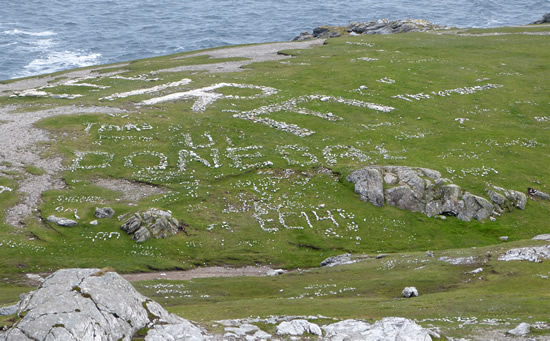
Malin Head
We just admired the views for a few minutes because it was so windy and a little chilly.
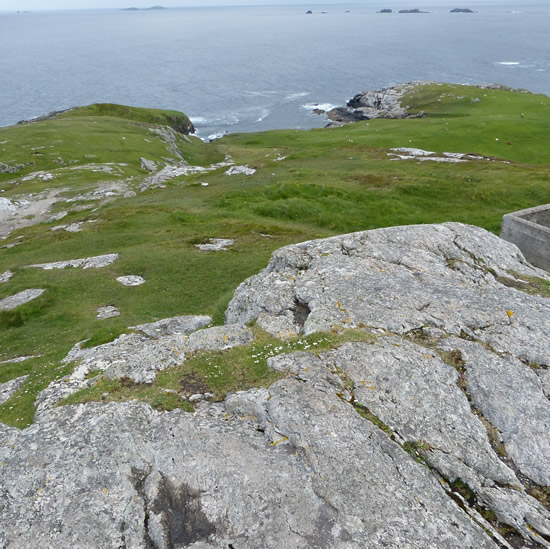
Malin Head
On the drive back out of Malin Head, we stopped in a small antinques shop along the road with views over the sea.
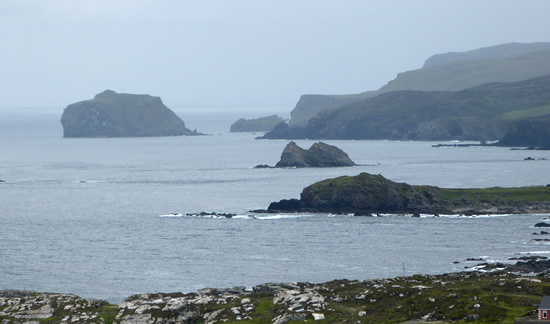
View from Malin Head
A few of the cottages along this road were much older and looked picturesque. They reminded me of the cottages we saw in the folk village. I think these cottages would be dark inside, though, as there are not many windows. I imagine that they are quite warm inside as they do not have windows on the front side that is facing the sea.
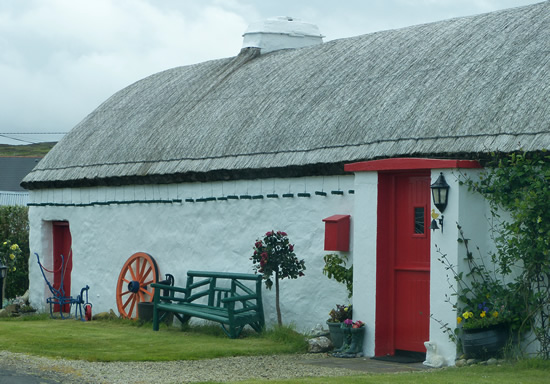
Traditional cottage in Ireland on Malin Head
We stopped at a small cafe on the way out of Malin Head and had a quick lunch of toasted sandwiches before we continued on our journey. It was time to leave Inishowen Peninsula with one last stop off at Grianan Ailigh (Grianan of Aileach), an ancient stone fort on top of a hill at the southern edge of Inishowen. To get there, we had to drive up another large hill, but we were rewarded with excellent views. Of course, the weather just off the main part of the peninsula was sunny and warm.
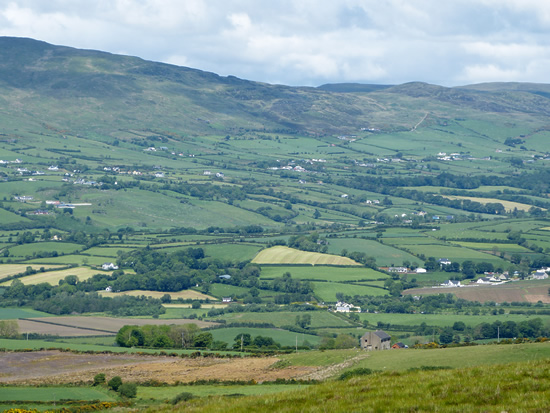
View over hills from Grianan of Aileach fort
Grianan Ailligh is an ancient and large stone fort built on a hillside on the southern side of Inishowen, though technically not really on the main part of the peninsula. This fort was probably built around the time of the birth of Christ, and it was probably built here because nearby there is a sacred monument of a Neolithic burial mound (3,000BC). The fort is a very short walk from the car parking, so we walked up to it.
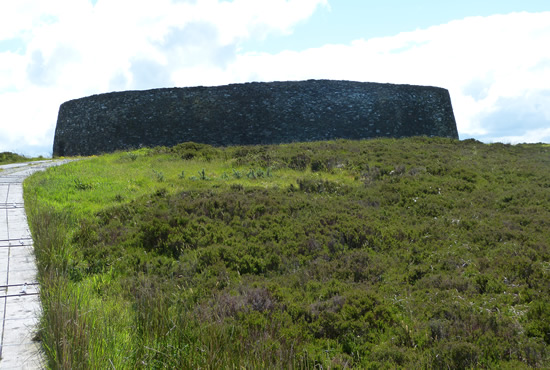
Grianan of Aileach
The walls of Grianan Ailigh are 4.5 meters thick. Two passages exist inside the wall and are 5meters high. An ancient roadway leads to the fort, and earlier forts also existed in this location.

Grianan Ailligh
I found the fortress fascinating. Climbing around the steps and seeing the views from this fortress was fun, and I could see for miles.
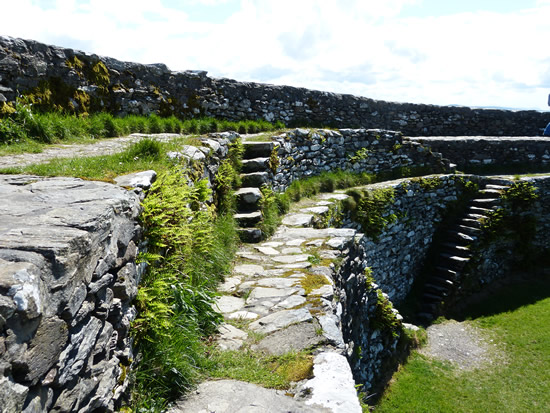
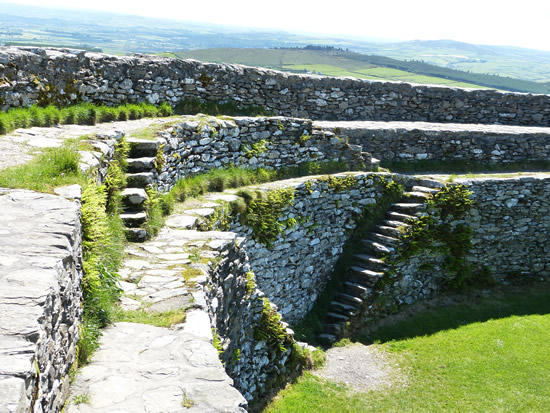

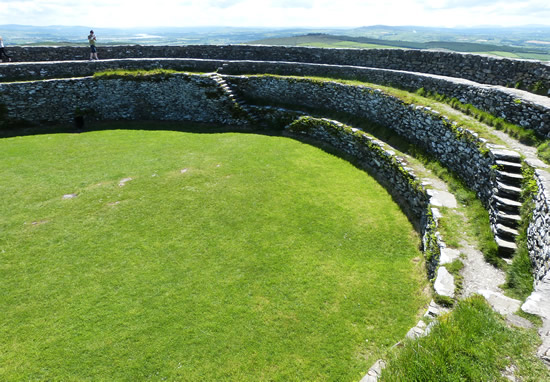

The stones are so thick, and I was impressed by the size of this stone above the door and how huge this stone is and how much it must weigh to have been maneouvered into this position.
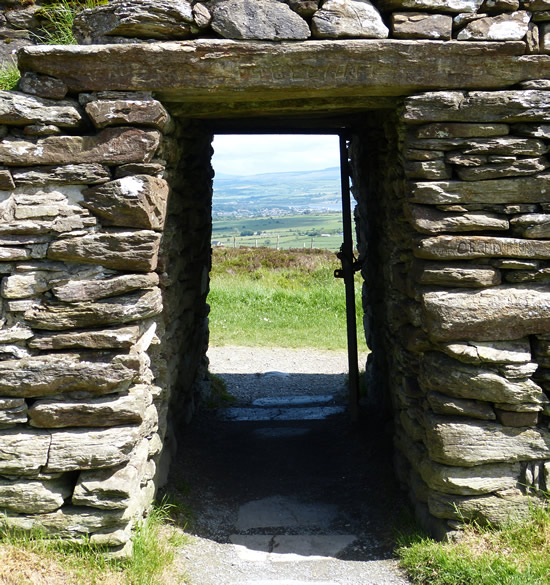
Grianan Aileach doorway
Just to the south of the fortress is St. Patrick's well. These water features were probably well-regarded before Christianity but then taken over as important places by the early Christains to help the spread their religion.
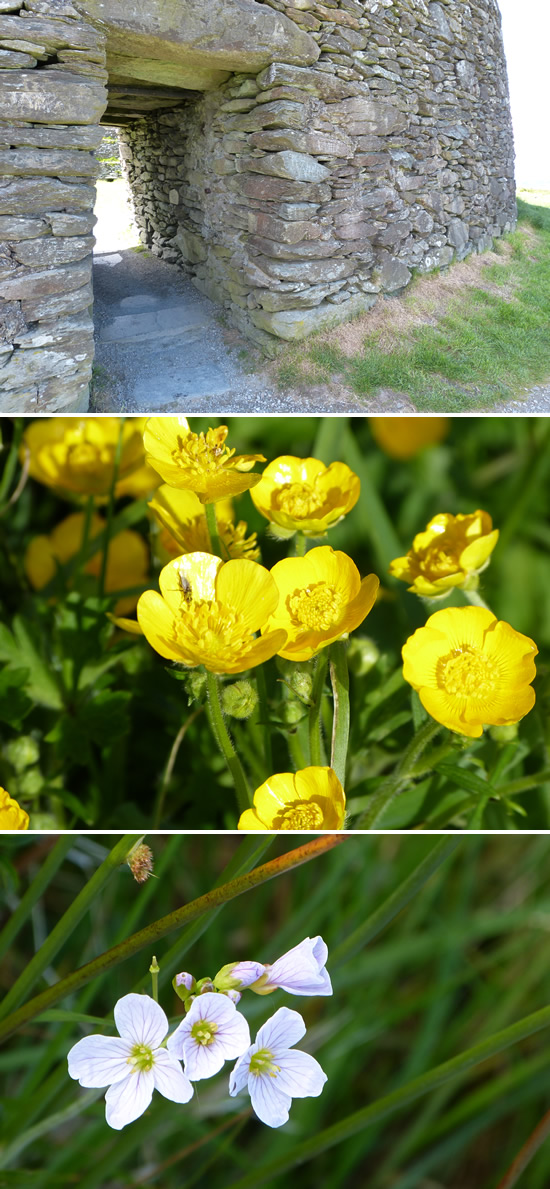
Grianan Aileach and flowers
On the walk down the hill, I got some photographs of some pretty late spring flowers. After our visit to the hill fort, we got back into the car and headed toward Glenveagh National Park. Unfortunately, the traffic was very bad around on the way to and in the town of Letterkenny, so we were a little bit pushed for time and had to rush our next tour. By this time, the weather was perfect. We had sun, and the temperature was warm. Come back to read my post of Glenveagh Castle.
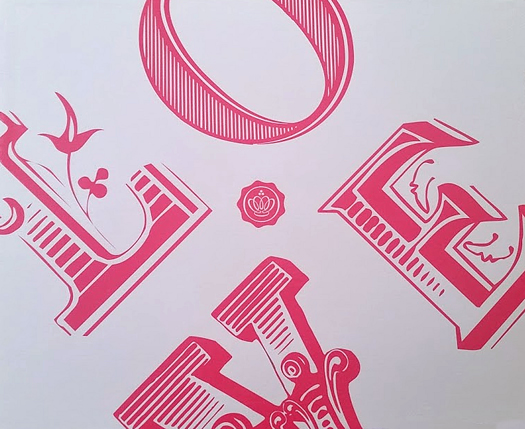

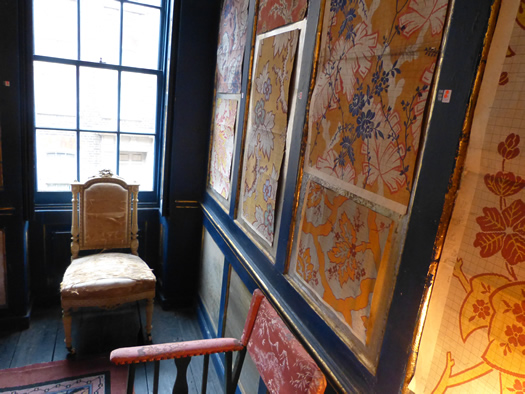
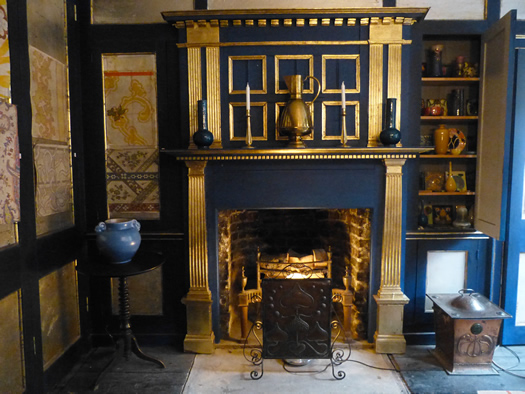
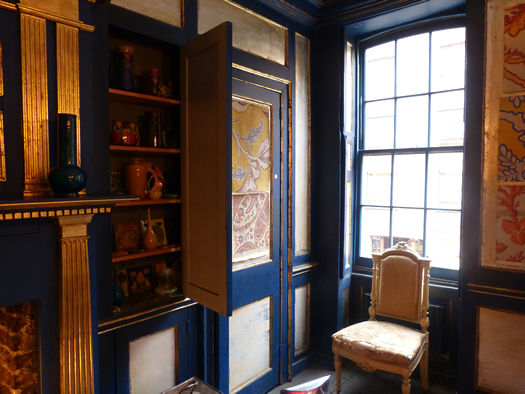
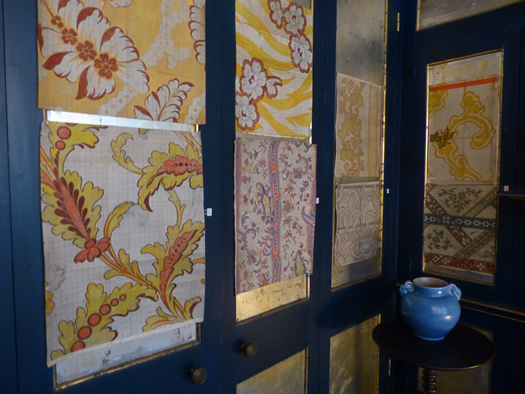
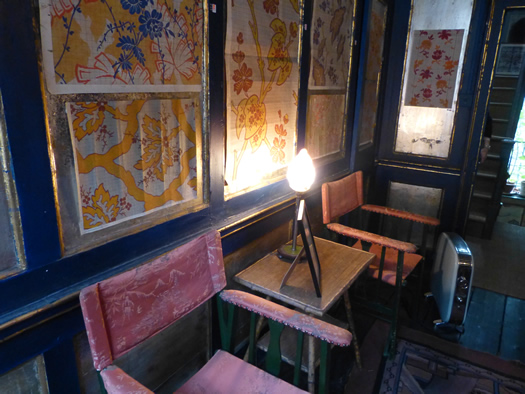


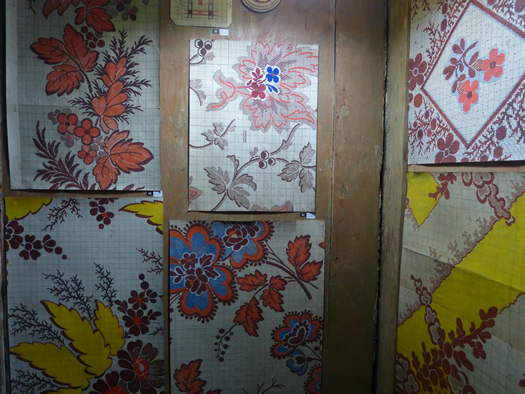
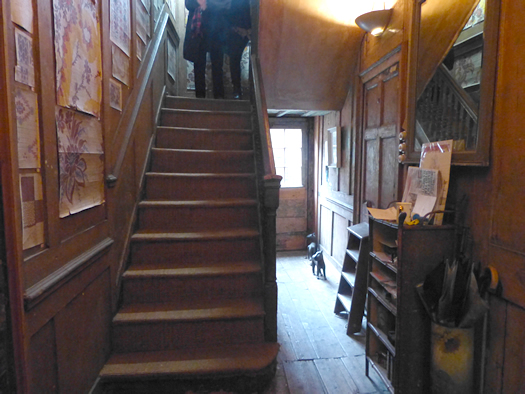


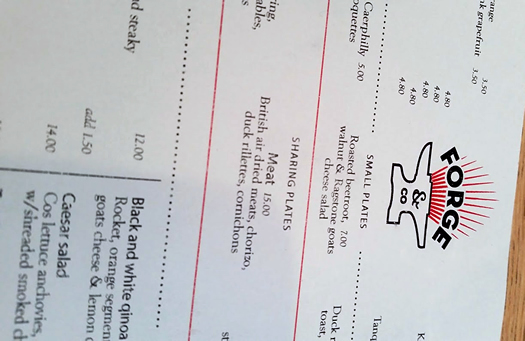
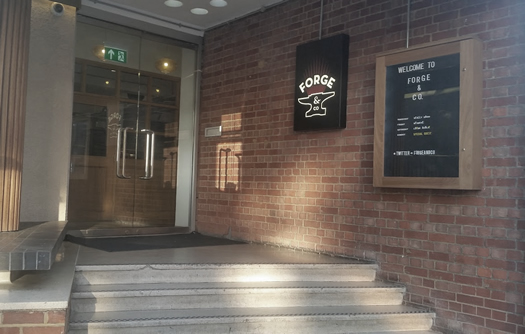
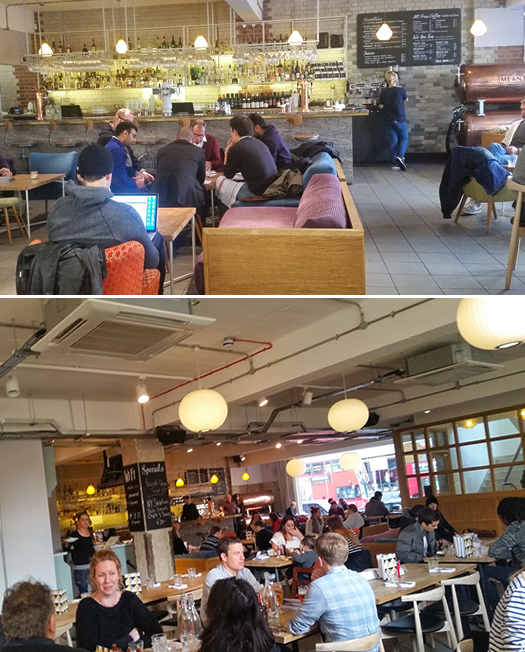

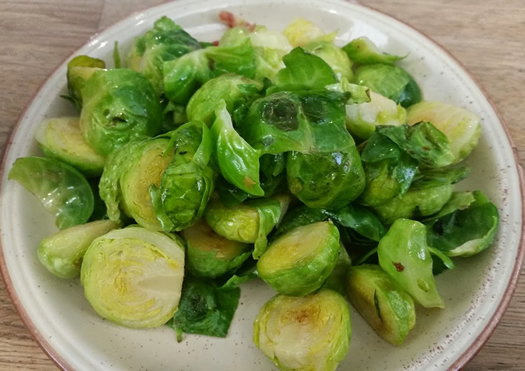

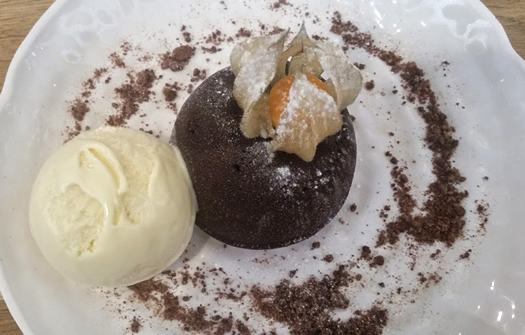

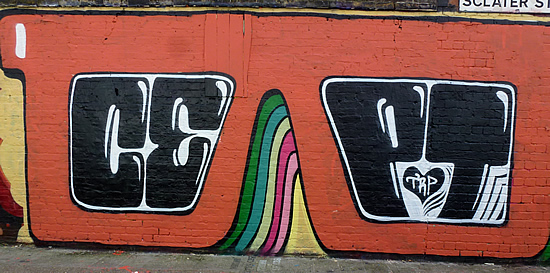
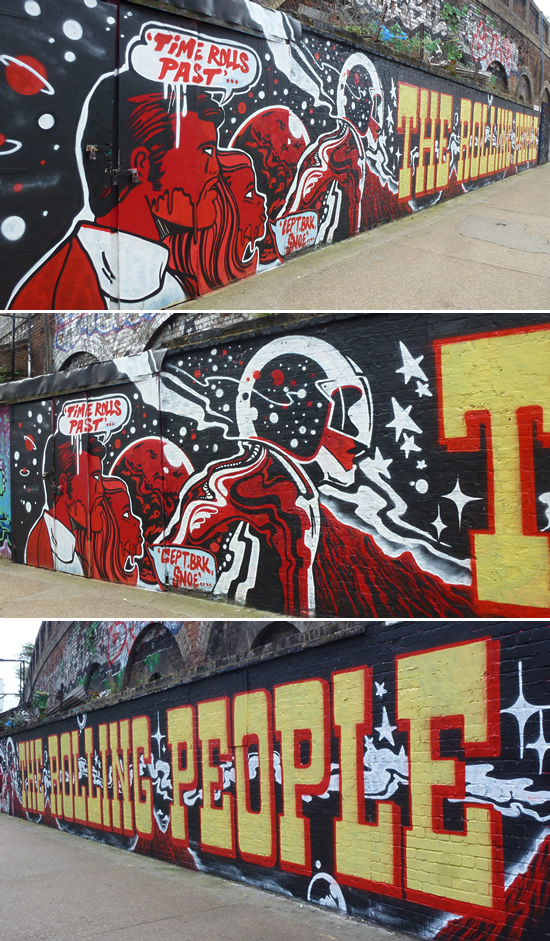

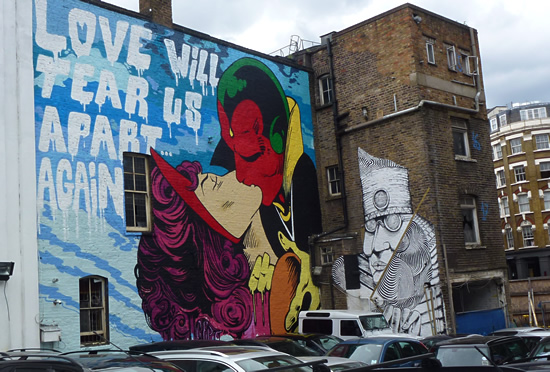


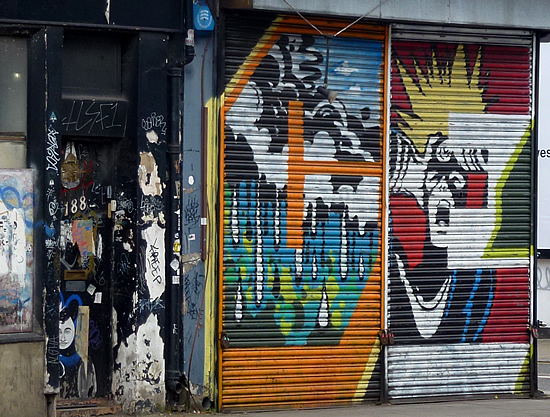






























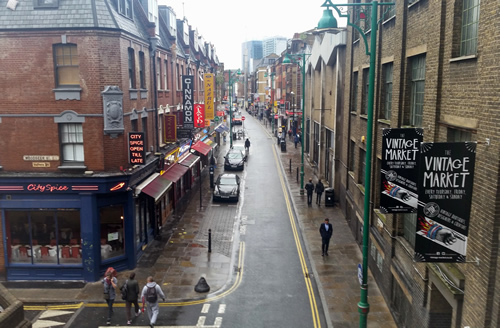



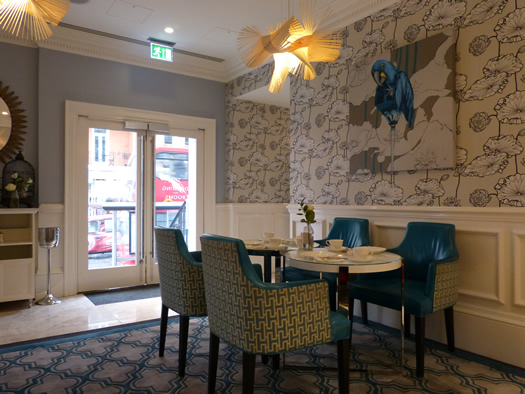



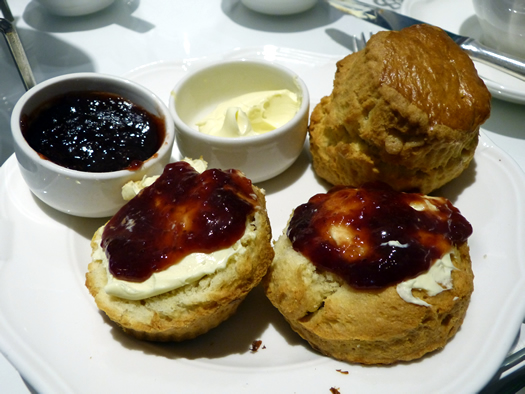




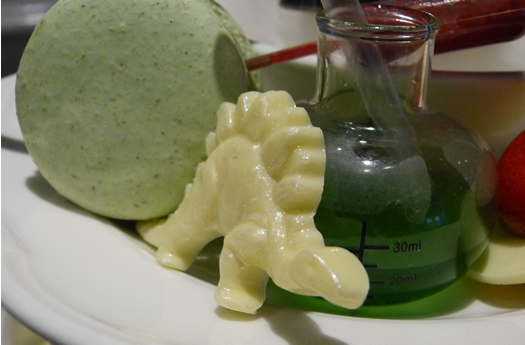
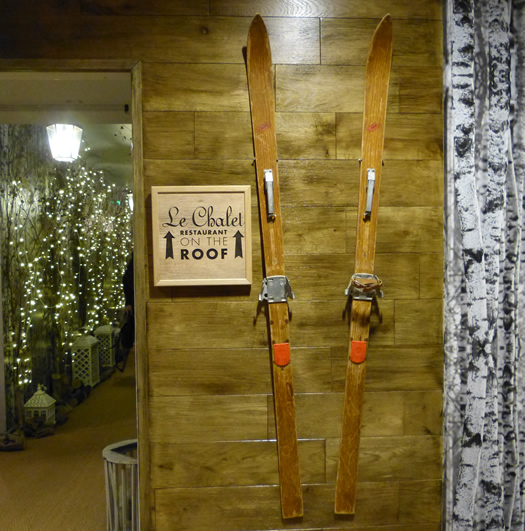
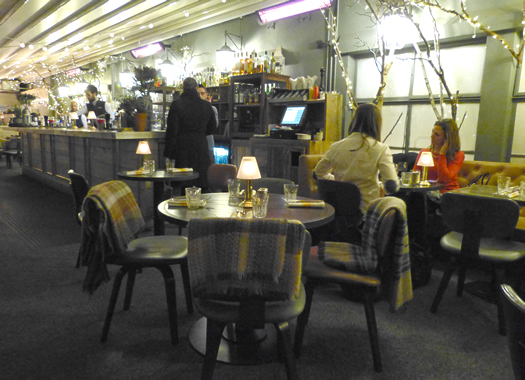

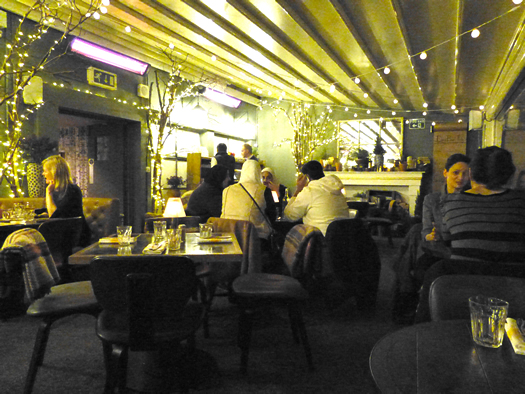
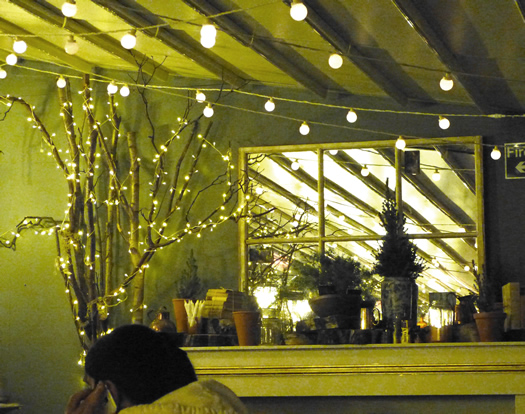


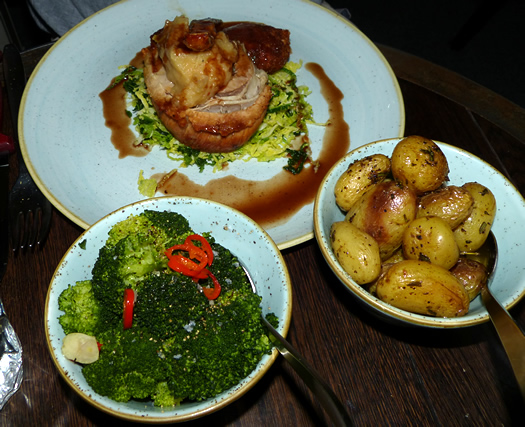

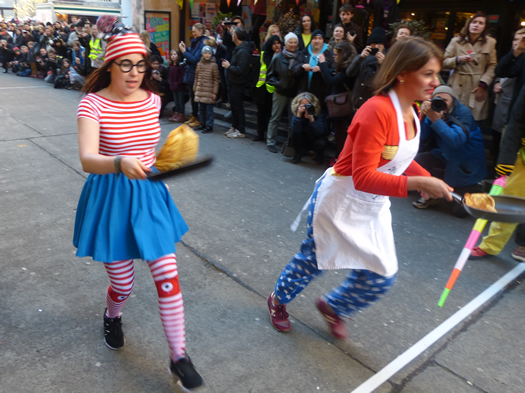
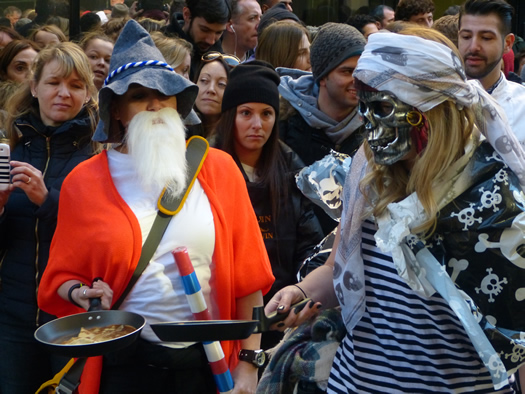

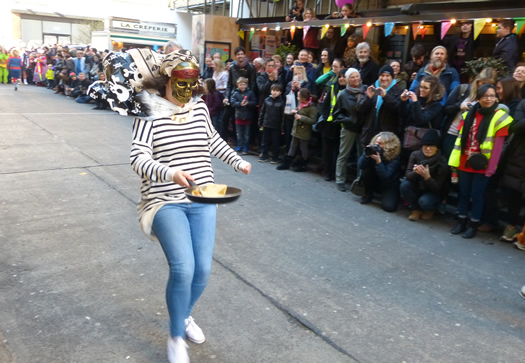
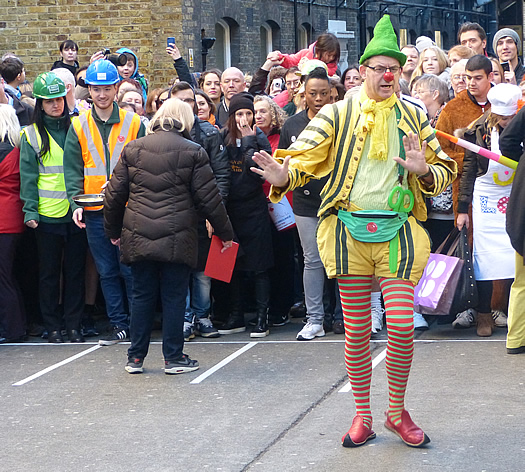
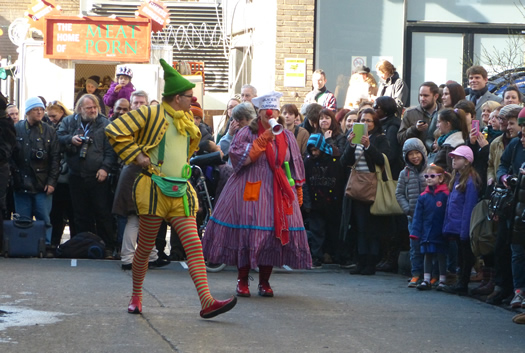

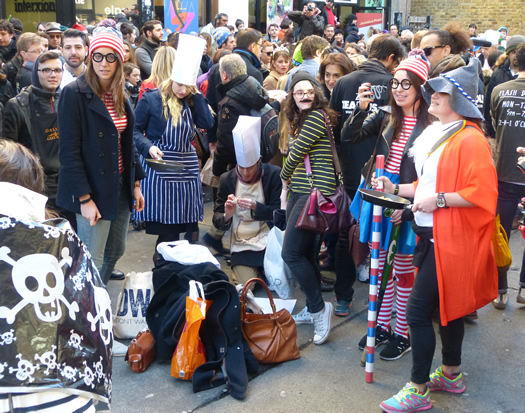
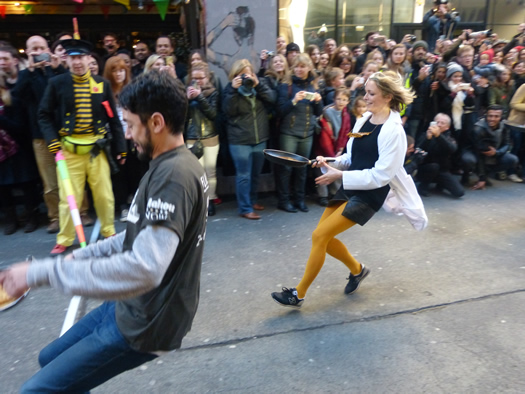
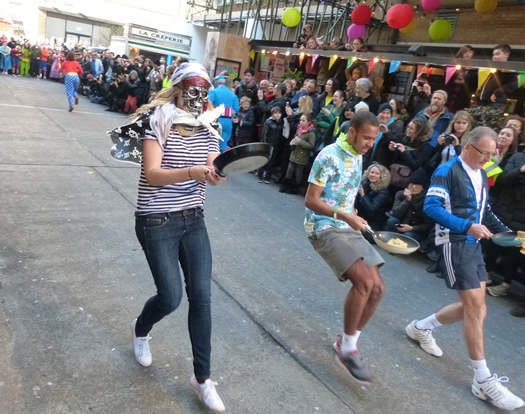
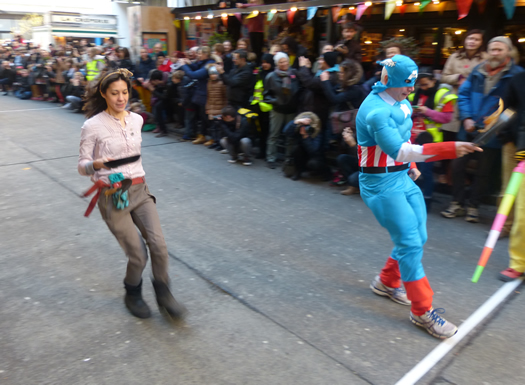
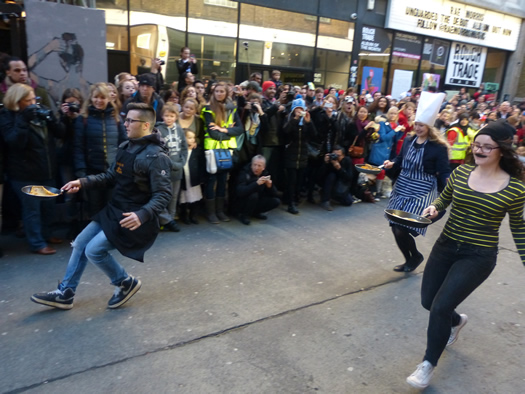
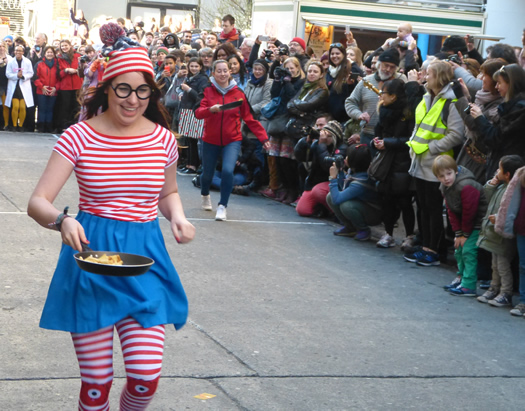
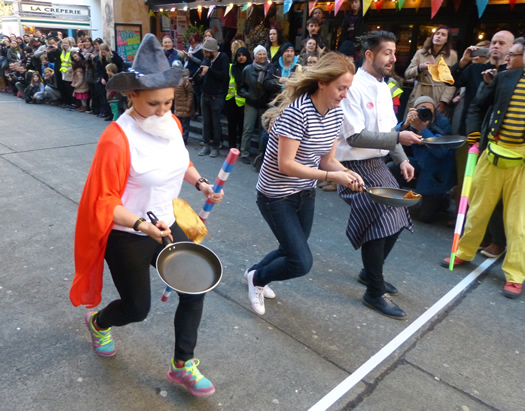
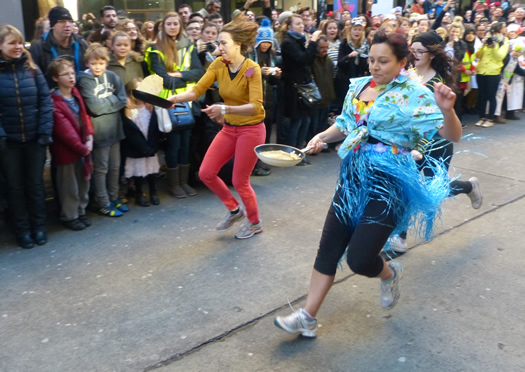







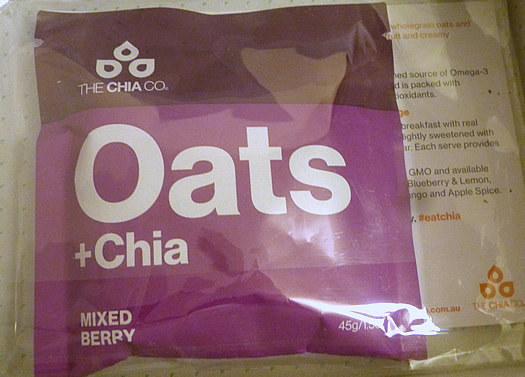
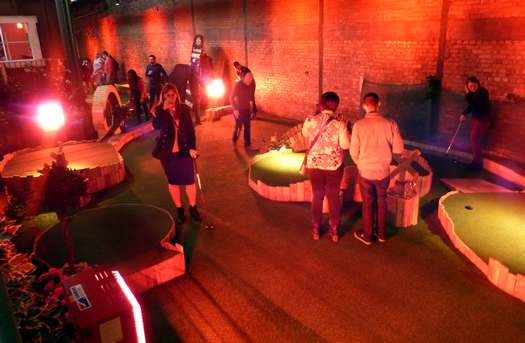

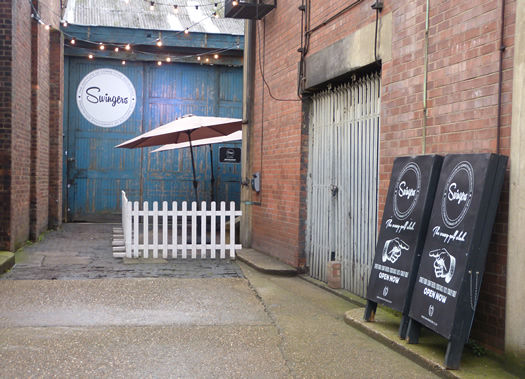

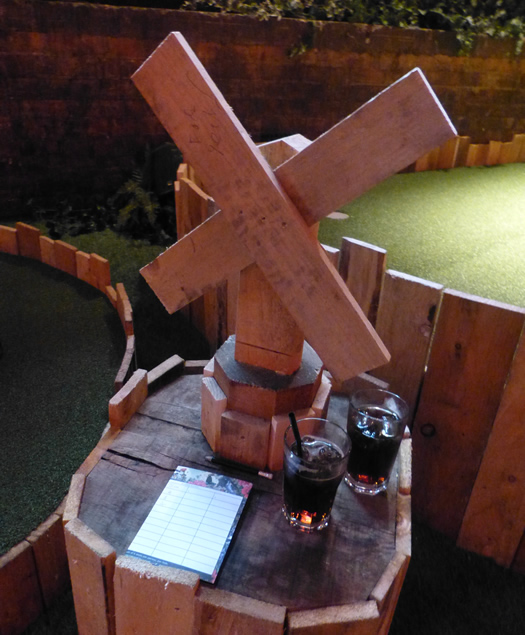

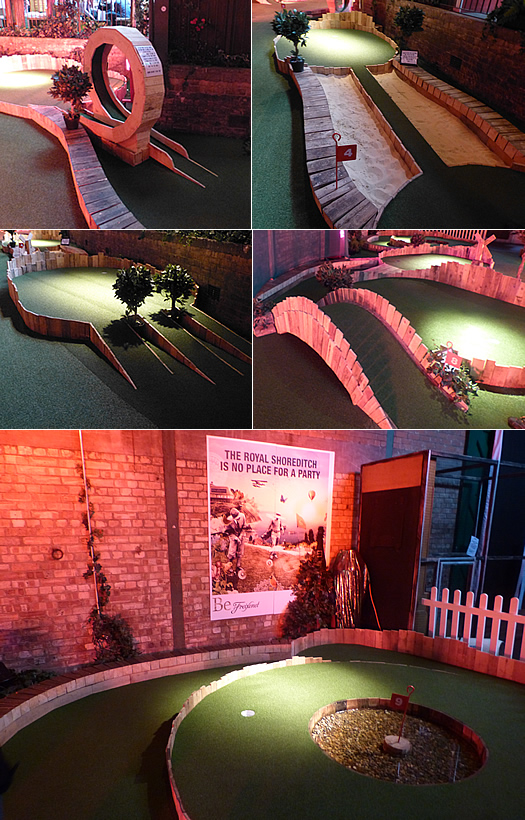
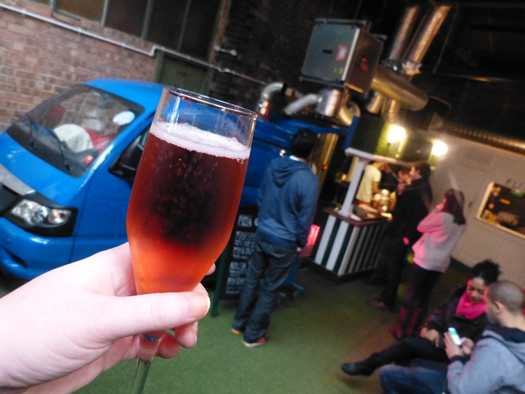
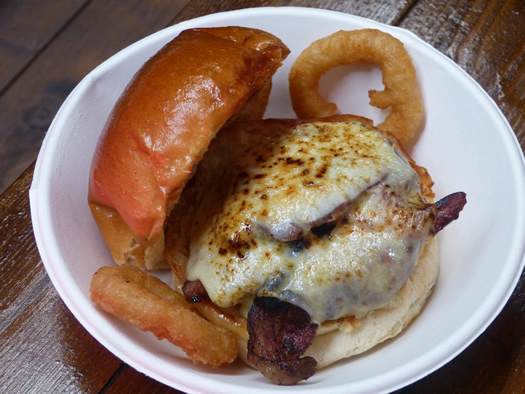




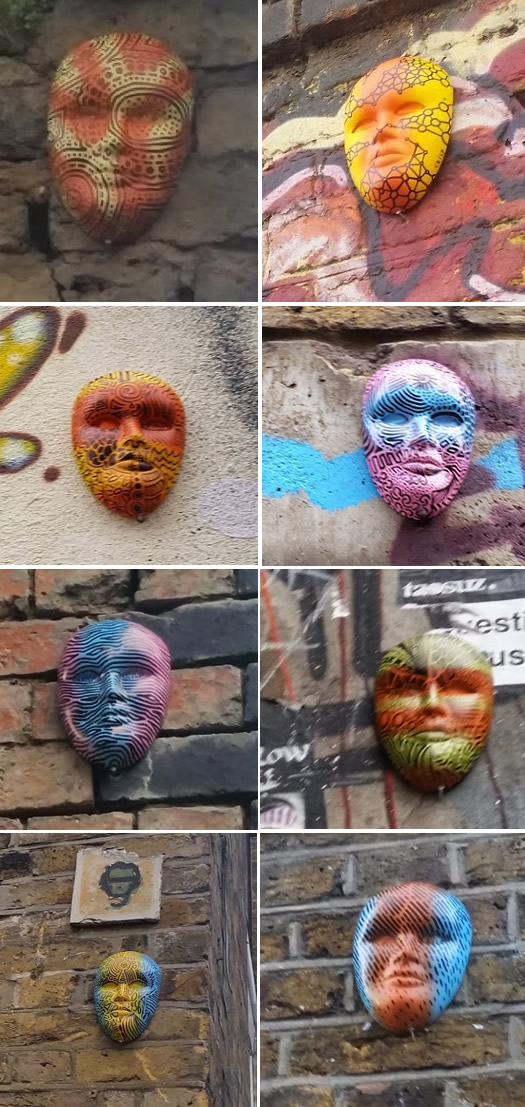

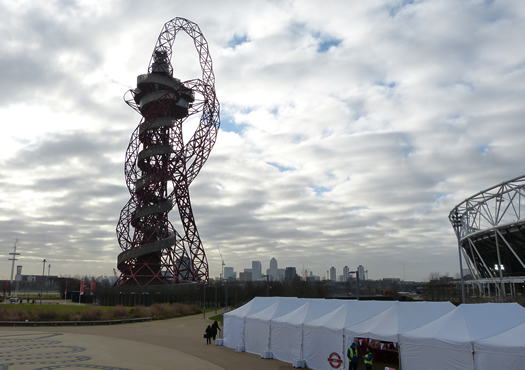
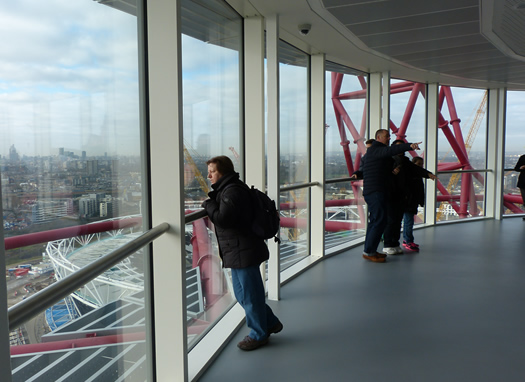
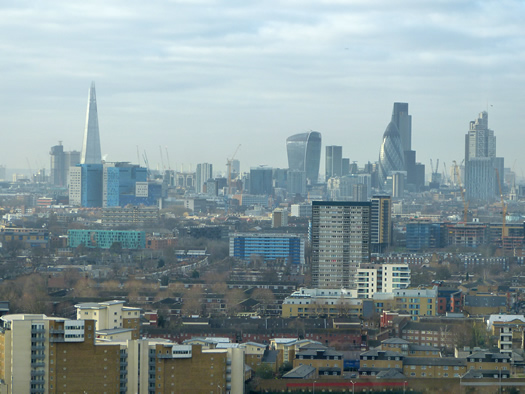
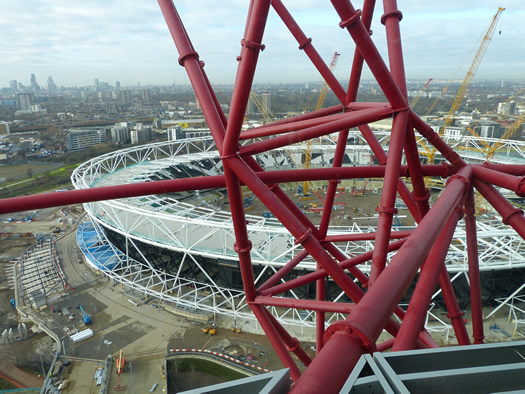
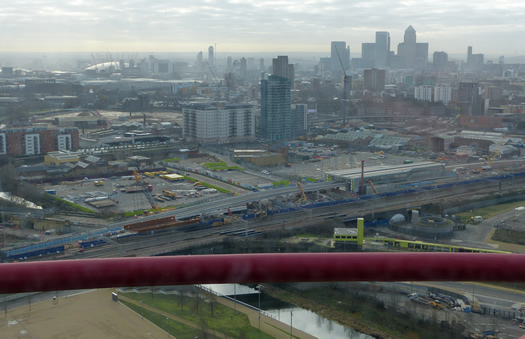
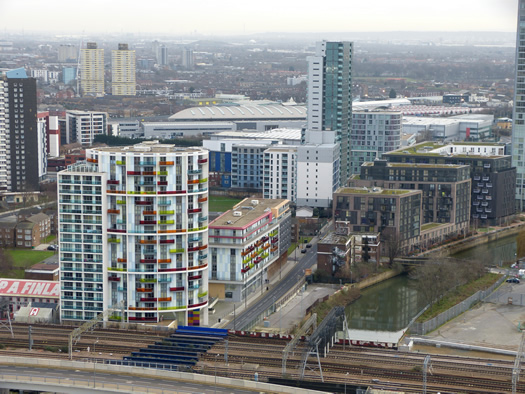
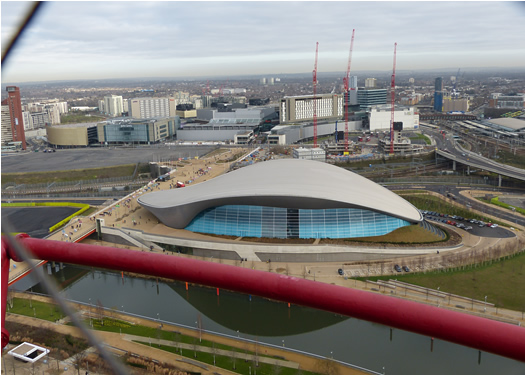
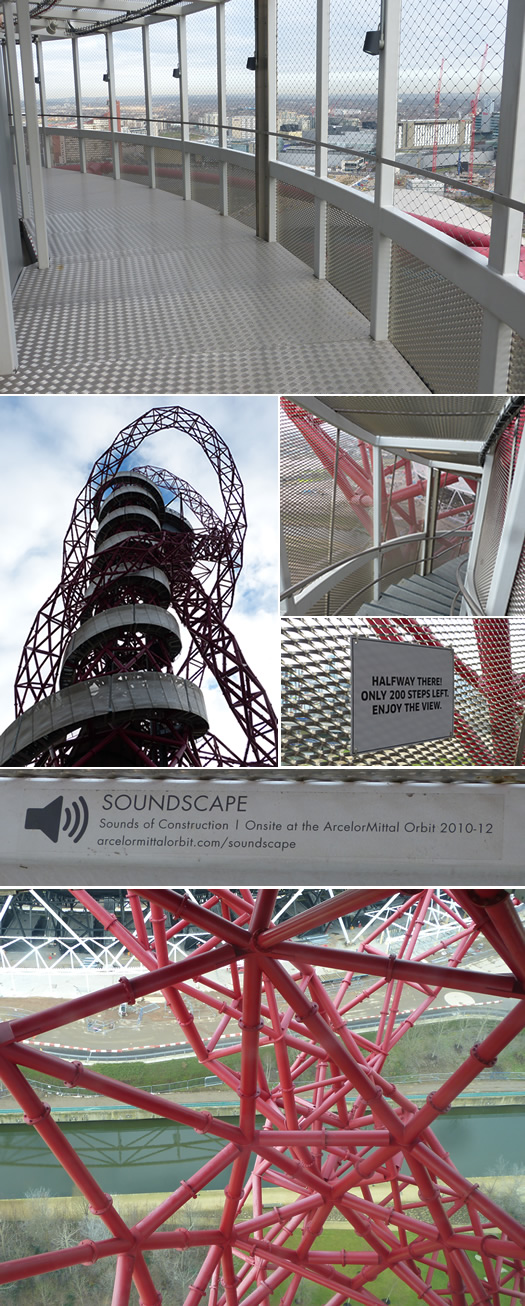


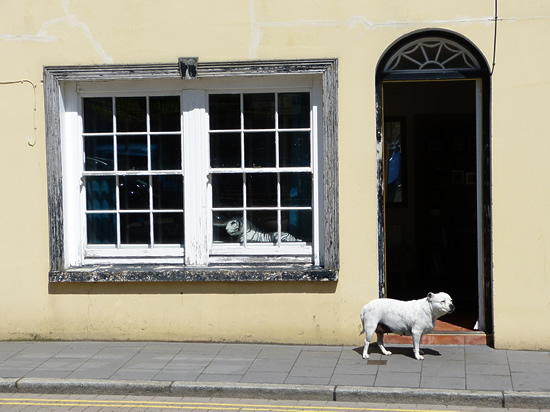
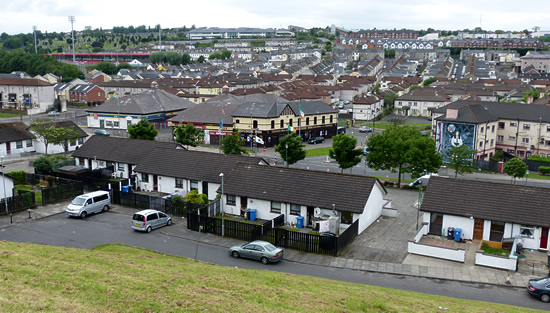

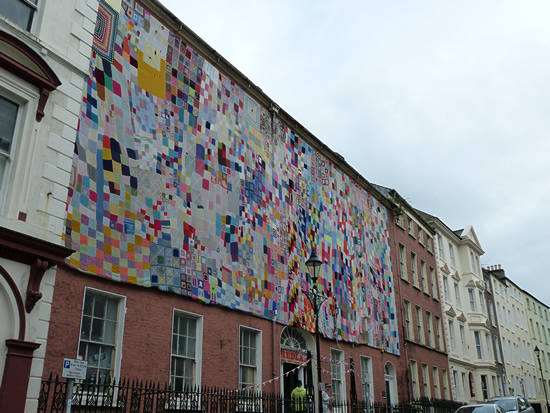
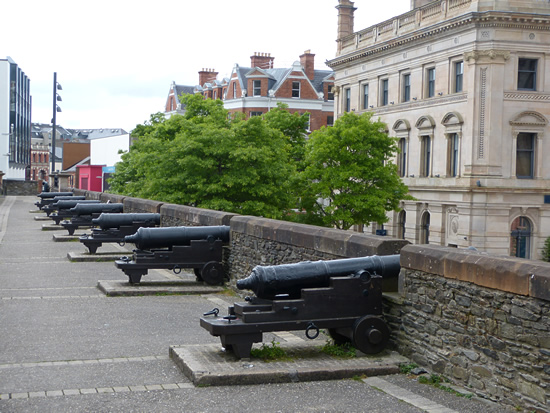
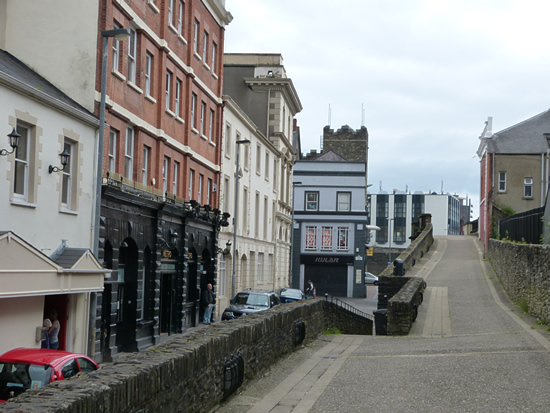
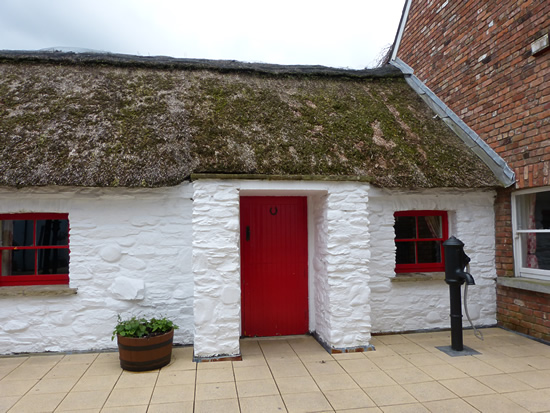




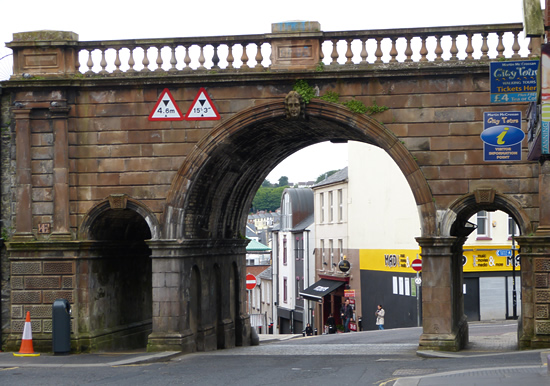
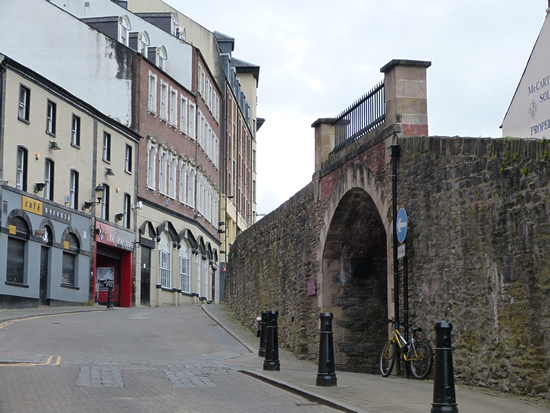

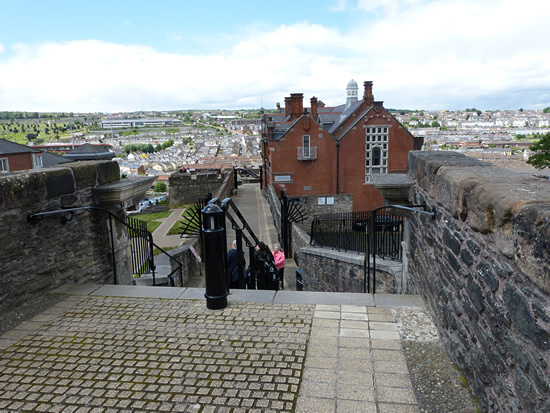
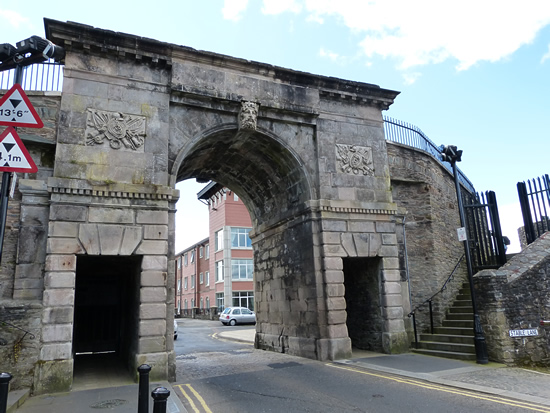
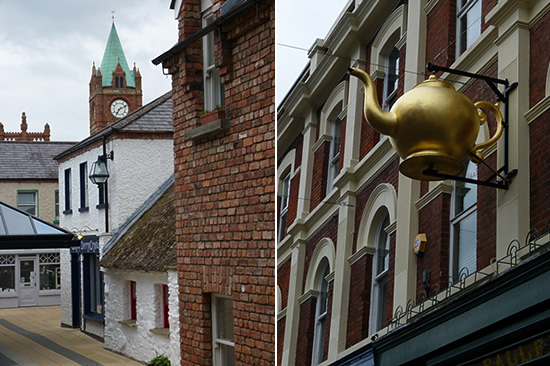

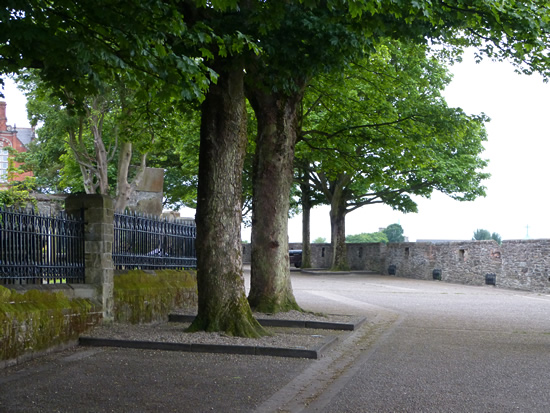
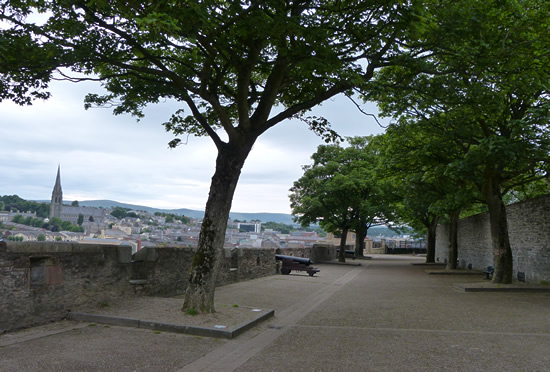
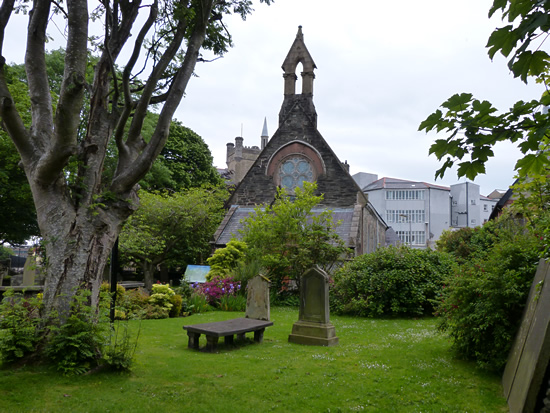
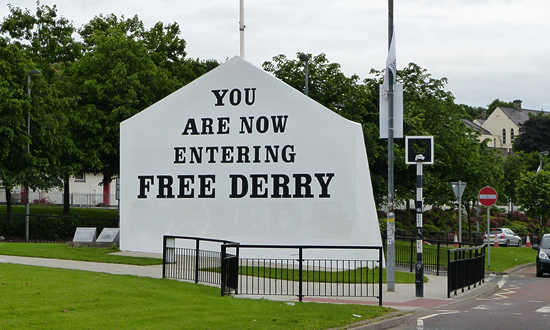
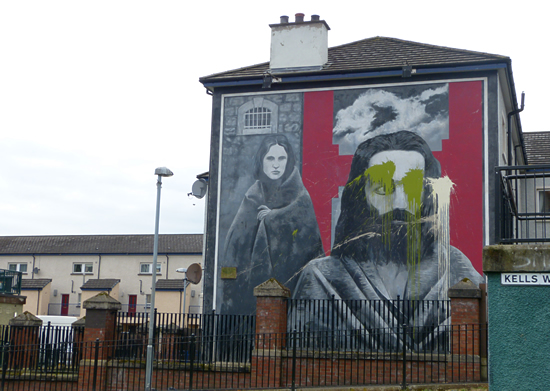


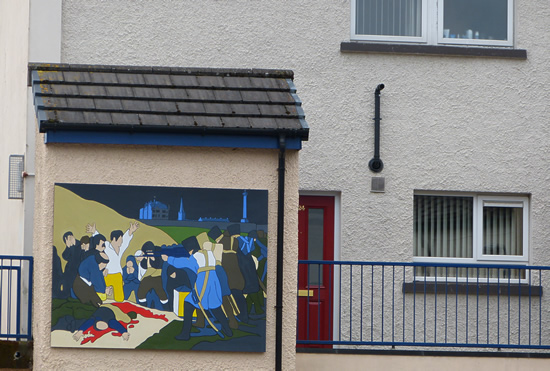
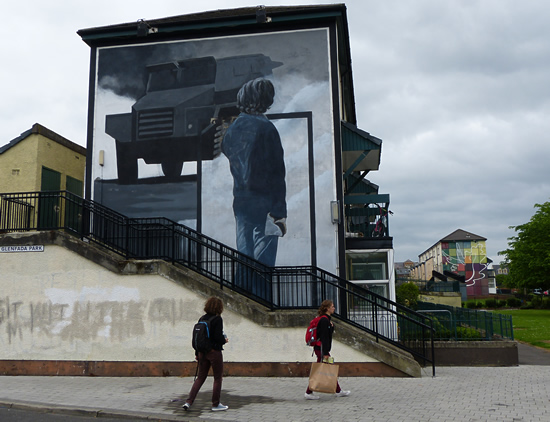


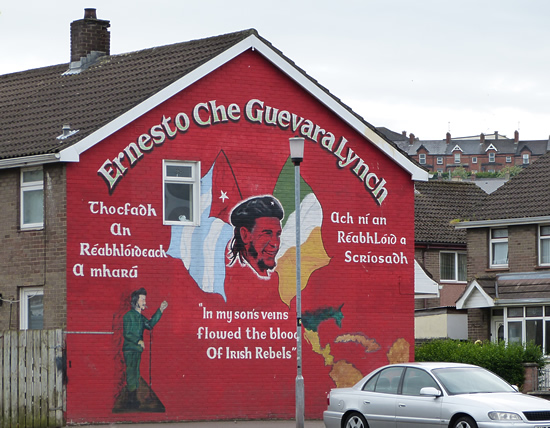


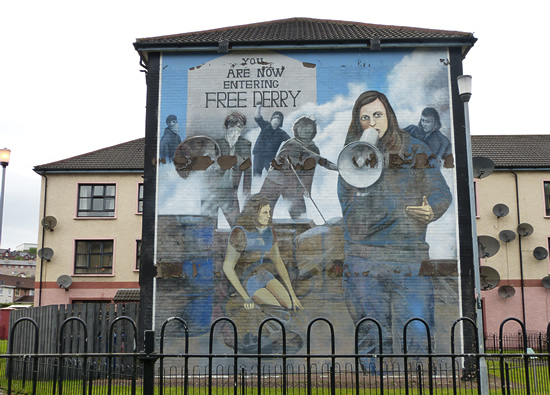
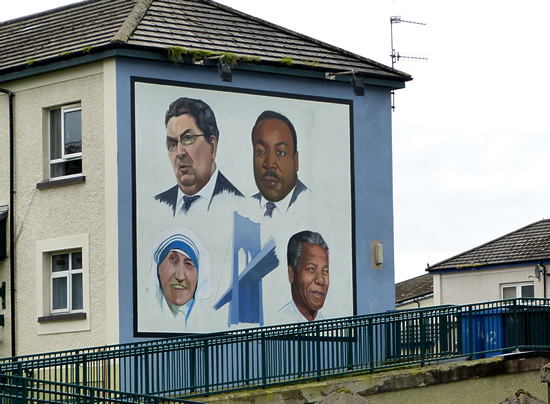
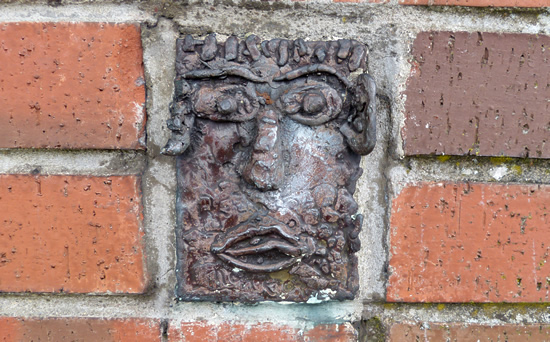
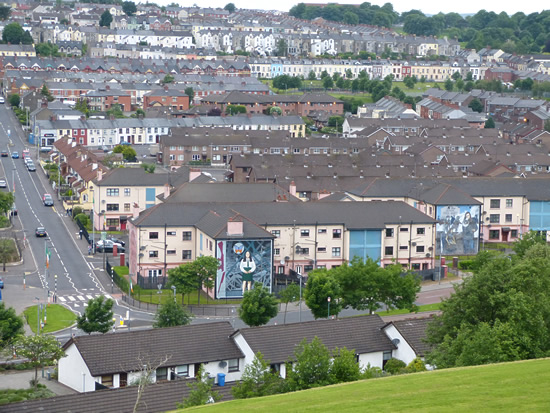
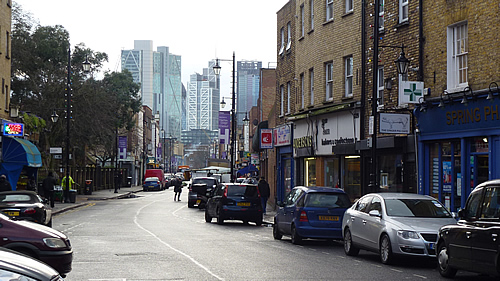
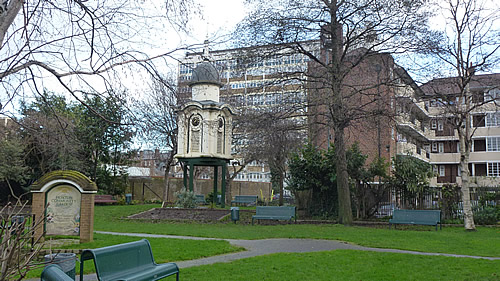
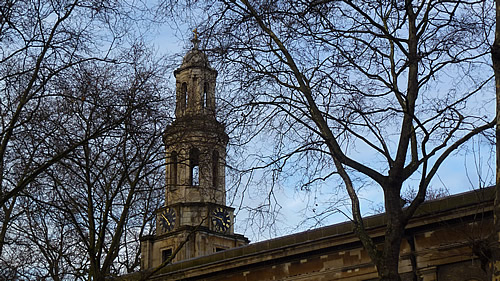

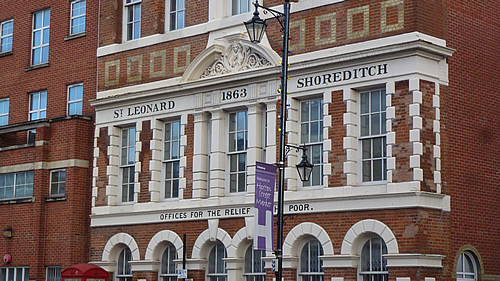
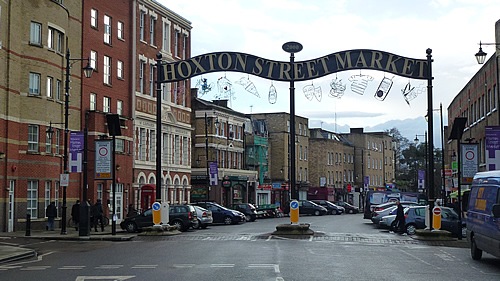

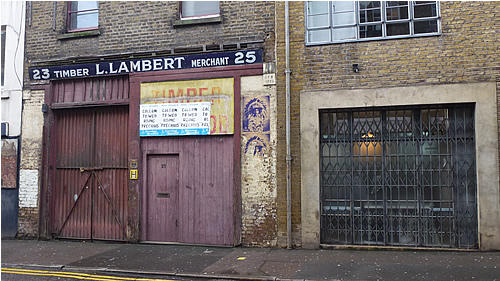

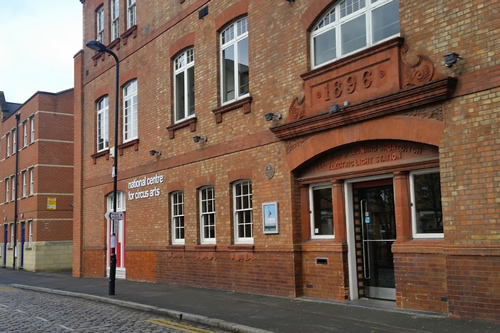
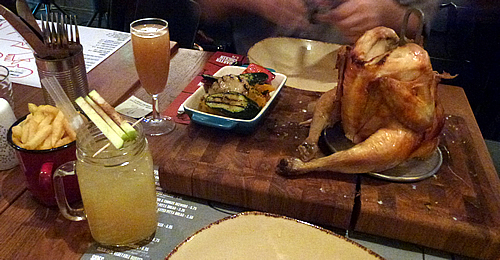



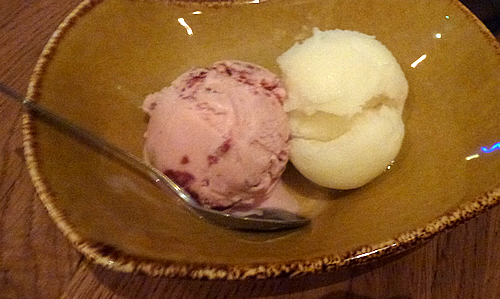



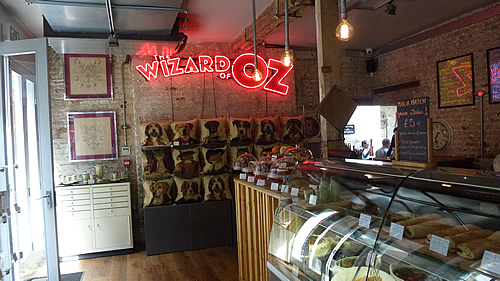




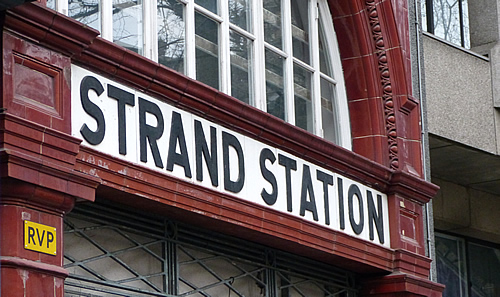

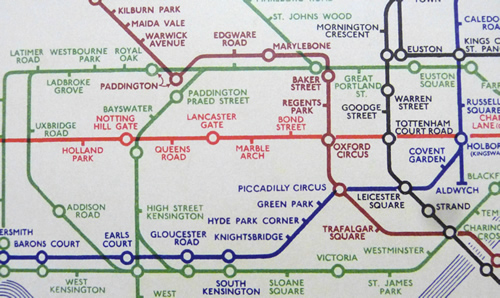
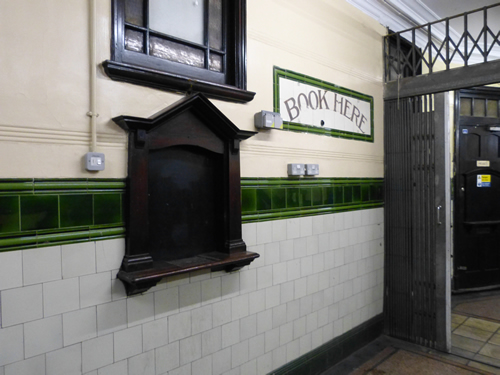

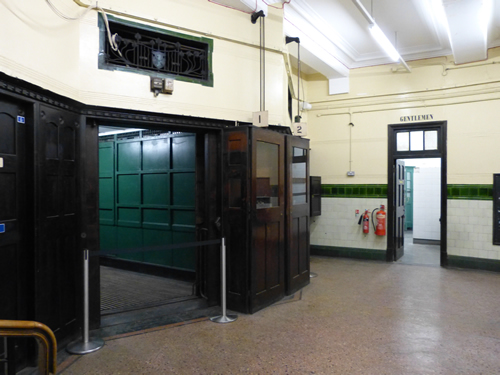
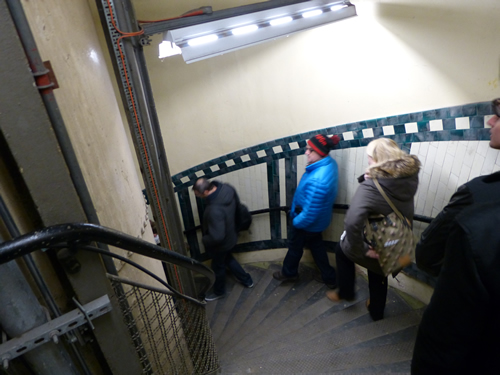



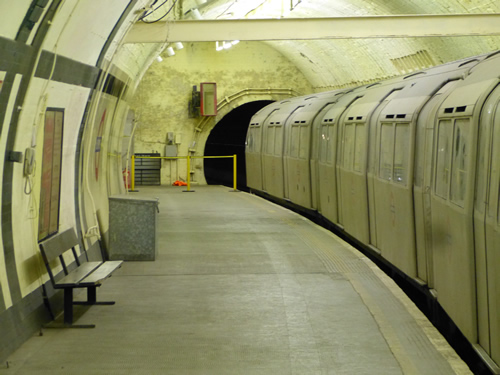
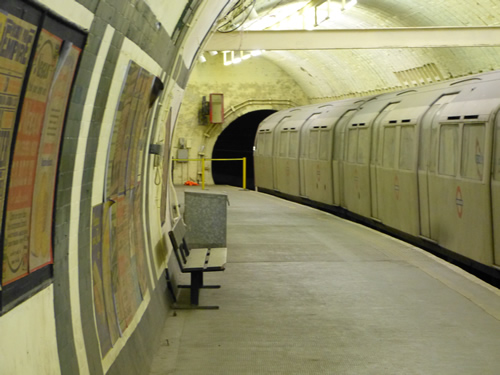
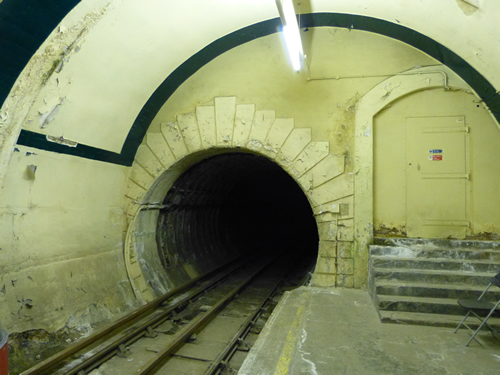
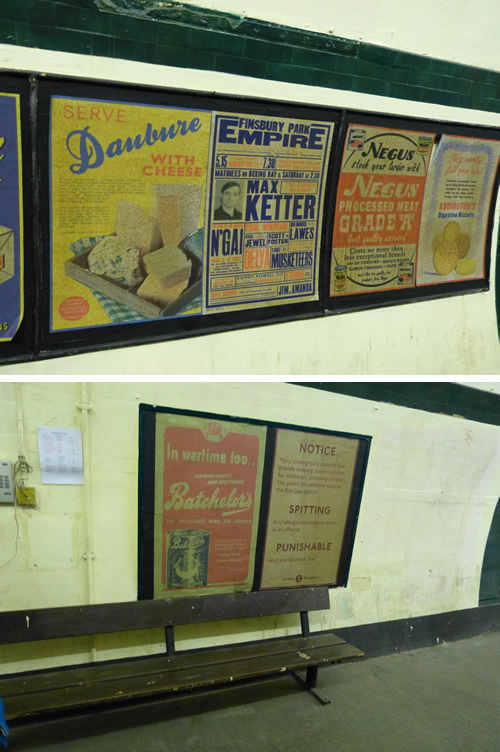


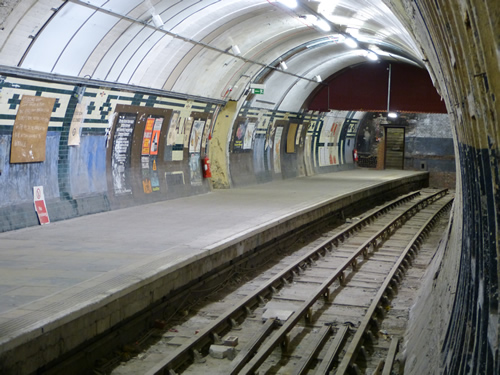
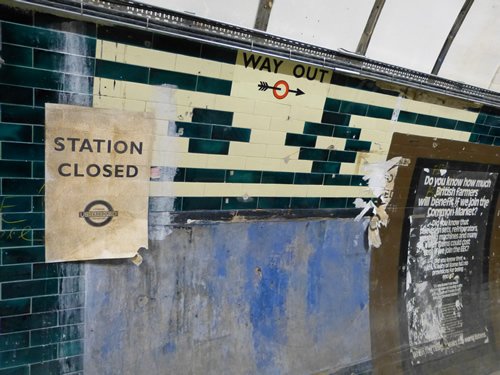




Recent Comments